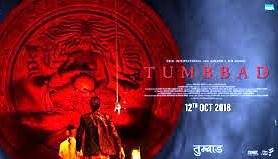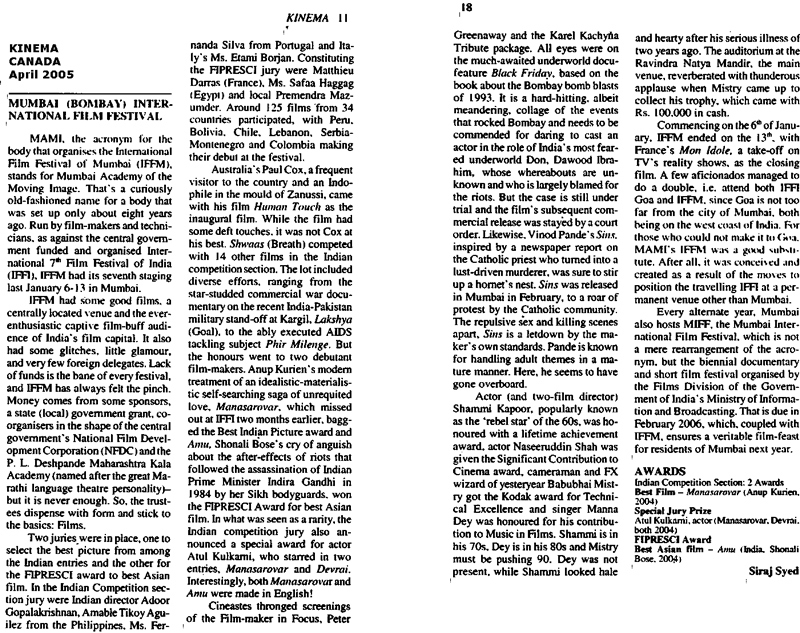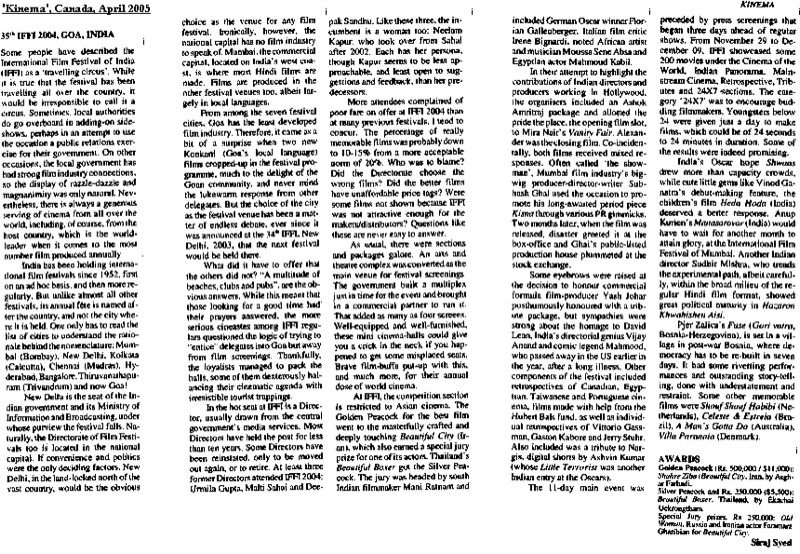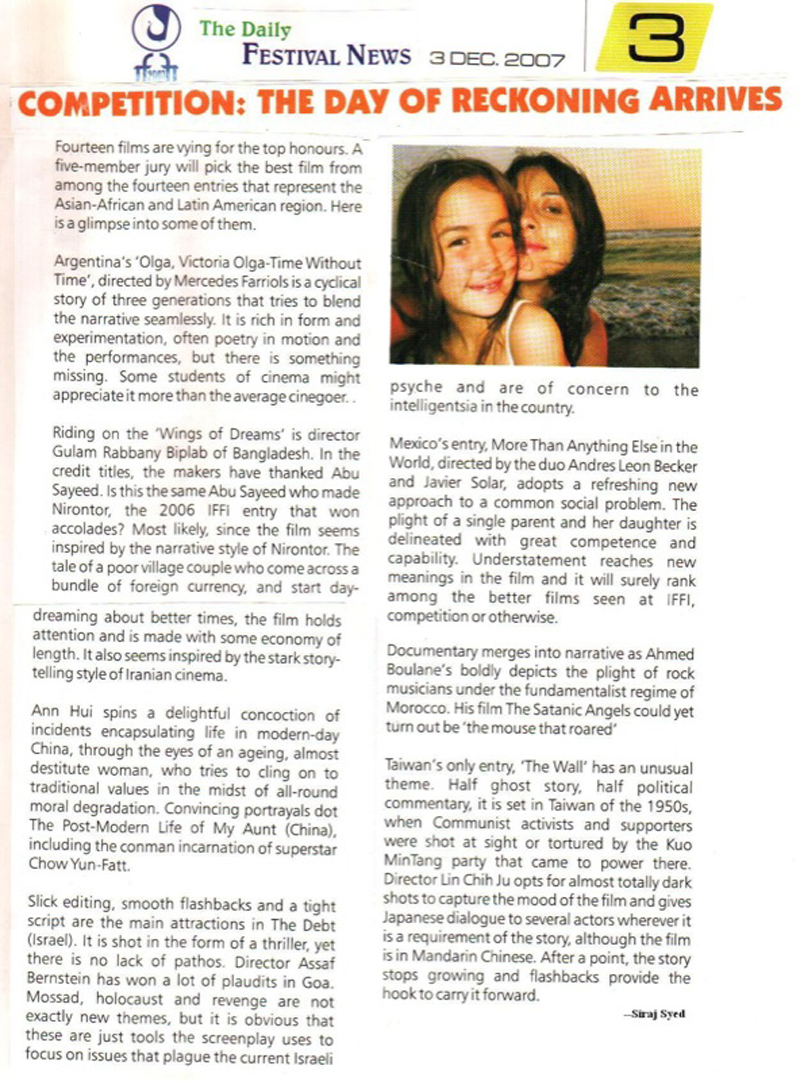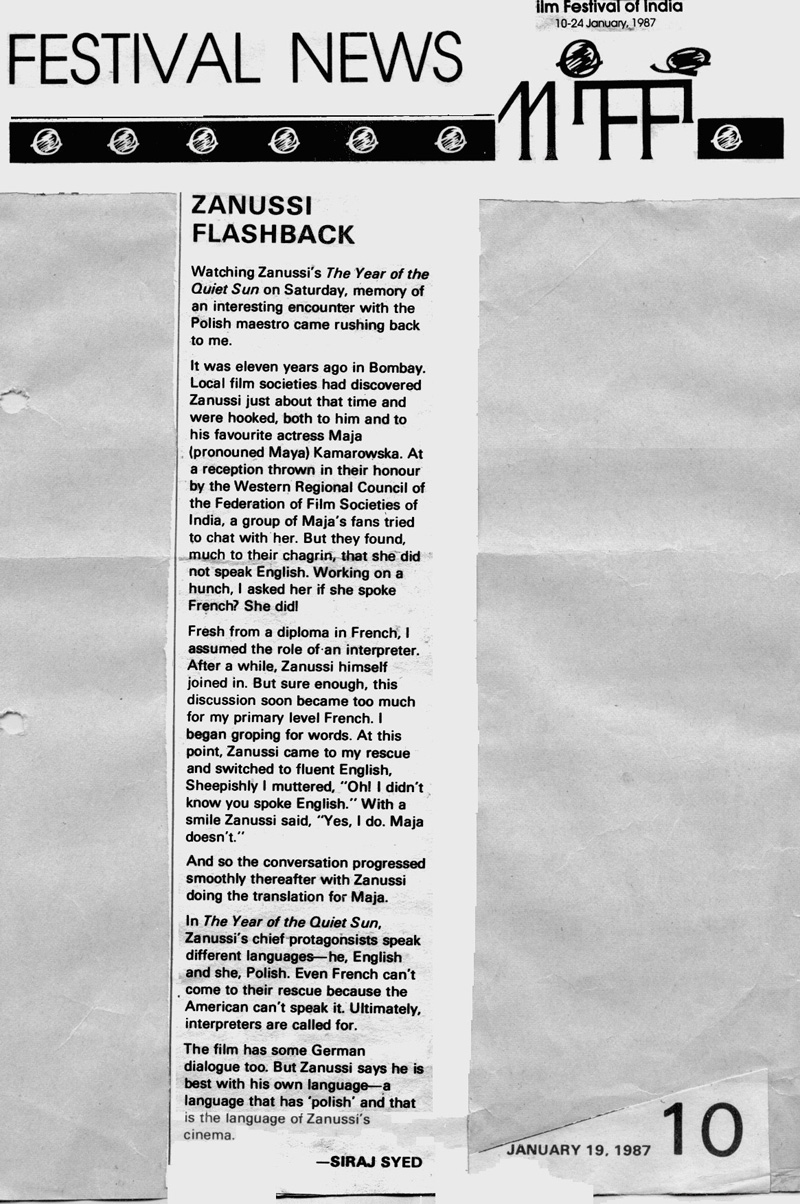|
|
||
|
Pro Tools
FILMFESTIVALS | 24/7 world wide coverageWelcome ! Enjoy the best of both worlds: Film & Festival News, exploring the best of the film festivals community. Launched in 1995, relentlessly connecting films to festivals, documenting and promoting festivals worldwide. Working on an upgrade soon. For collaboration, editorial contributions, or publicity, please send us an email here. User login |
Tumbbad, Review: Hastaar the Horrible and the Dough Dolls
Tumbbad, Review: Hastaar the Horrible and the Dough Dolls Tumbbad, named after the location where most of the action takes place, is a historical fantasy horror film, directed by debutant Rahi Anil Barve. Anand Gandhi, the director of Ship of Theseus, served as the creative director, co-writer and executive producer, with Adesh Prasad as co-director and co-writer. Tumbbad is jointly produced by lead actor Sohum Shah and Aanand L. Rai, among others. The film took six years to make and is path breaking in many ways. Since it portrays mythical gods and goddesses, something that is taboo with the Central Board of Film Censors (CFBC), a disclaimer had to be added, to declare that the makers do not wish to portray the events as true and have used such characters and events only for the purpose of entertainment. Tumbbad is a mythological story about a goddess who created the entire universe and gave birth to 16 crore (160 million) deities. Her first born was named Hastaar, and he wanted all the gold and all the food in the world to become his property. He managed to grab the gold, but his mother and the other children did not let him get the food. For his follies, it was decreed that nobody should worship him, and so it was. Then, in more recent times, a family living in Tumbbad, in Western Maharashtra region of India, built a temple to him, and revived him from oblivion. Their idea was to grab the gold unending supply of gold, in return for dough dolls that served as his food. While he feasted on the food, the family relieved his body of gold coins. This continued till the early part of the 20th century. An old woman became victim to Hastaar and got possessed, doomed to a very long life and hideous looks that could scare the weak-hearted to a shiver. One of her heirs, several generations down the line, had employed a maid, a widow who looked after both him and his great, great grandmother. The man sired two children from her, one of whom fell from a hill and died. When the master himself passed away, the maid took her other son and headed for Satara, from where she moved on to Poona. She had one gold coin with her, for the miserly master did not part with his secret treasure, if any, acquired courtesy Hastaar. After she passed away, her son, Vinayak, decided to go back to Tumbbad and ‘prospect’ for gold. As many as four writers have worked on the story idea, drawing on Indian folk legends and the work of Marathi horror genre writer Narayan Dharap: Mitesh Shah, Adesh Prasad, Rahi Anil Barve, Anand Gandhi. Spread over three period slots—1918, 1933 and 1947—the film uses two main locales: Tumbbad and a set representing Poona (now Pune). Three story tracks are discernible: the prologue, the recovery of endless supplies of gold coins from Tumbbad and the goings on in and around Vinayak’s Pune home. At the latter locale, we meet some stock characters like a gold buyer/money-lender, a kept woman and a corrupt senior British police official. Choice of 1947 is significant, since that was the year India gained independence from the British. Besides being a horror and supernatural tale, Tumbbad is, above all, a moral story. To leave no doubt, the makers begin with a quote from Mahatma Mohandas Karamchand Gandhi, “The world has enough for everyone's need, but not enough for everyone's greed.” When Vinayak hits on the gold-mine, there is no looking back—it has to be milked, and milked and milked, till it might run dry, and that is hardly likely, considering the myth. According to Barve, “We shot in the rain at age-old locations, where no human had ventured for at least a 100 years. For me, Tumbbad’s locations, the feel of its stuffy air, and the lonely rainy atmosphere that defies the feeling of time’s passage is as central as its characters.” He said it. Many scenes are dark and grey, shot in natural light, making it very difficult to identify the characters and shapes that fill the screen. It is muddy yellow, glowing red and brown, for most of the time. But the times when the lanterns appear as a magic wand and you do see the monsters, tremors can be felt down your spine. The camerawork, CGI and VFX are first-rate. And dialogue is kept to a minimum. Sohum Shah as Vinayak lives the role. It is said that he gained eight kilos to look like the wrestler and maintained his weight for almost six years, the time it took to complete the film. Deepak Damle as the money-lender is another fine piece of casting. Competent support comes from, Harish Khanna, Ronjini Chakraborty (Vinayak’s mistress), Anita Date (Vinayak’s wife), Mohammed Samad (Vinayak’s son), Jyoti Malshe (Vinayak’s mother), Rudra Soni and Dhundiraj Prabhakar Joglekar. Direction is a combined effort of three persons, but the seams don’t show. A lot can be credited to the smooth camera of Pankaj Kumar, who, like Gandhi and Shah, is a carry-over from The Ship of Theseus. Known for his work on video-games, Jesper Kyd has done the music. It is eerie and effective for the most part, till Kyd decides to go over the top. At a length of 104 minutes, editor Sanyukta Kaza has things under control. One only wishes the Poona scenes, which provide a kind of lull in the terror, were shortened. One great twist comes in the form of the reason why Vinayak’s mistress was planted and another comes when he realises that his son is as greedy and sharp as him to earn his seat alongside the driver’s position in Vinayak’s new car, as he heads for Tumbbad one more time. Horror films made in India usually turn out to be murder mysteries. It is rare to find a Jaani Dushman, Stree or a Tumbbad among them, for reasons listed right above. Pure, supernatural horror awaits you in Tumbbad, and it is done with élan. But in the end, the story turns out to be rather thin. Some clever writing results in engaging screenplay, with the same process of recovering coins appearing frightfully different each time. It is hard to believe that such a place existed and nobody knew what was going on in its interiors for decades on end. All we see in terms of other humans are fleeting glimpses when two dead bodies are cremated. Recommended for technical slickness and repugnant fear factor, coupled with competent characterisations. Rating: *** ½ Trailer: https://www.youtube.com/watch?v=sN75MPxgvX8 12.10.2018 | Siraj Syed's blog Cat. : Aanand L. Rai Anita Date Deepak Damle Dhundiraj Prabhakar Joglekar. Harish Khanna Jesper Kyd Jyoti Malshe Mohammed Samad Pankaj Kumar Rahi Anil Barve Ronjini Chakraborty Rudra Soni Sanyukta Kaza Ship of Theseus Sohum Shah Independent FILM
|
LinksThe Bulletin Board > The Bulletin Board Blog Following News Interview with EFM (Berlin) Director
Interview with IFTA Chairman (AFM)
Interview with Cannes Marche du Film Director
Filmfestivals.com dailies live coverage from > Live from India
Useful links for the indies: > Big files transfer
+ SUBSCRIBE to the weekly Newsletter Deals+ Special offers and discounts from filmfestivals.com Selected fun offers
> Bonus Casino
User imagesAbout Siraj Syed Syed Siraj Syed Siraj (Siraj Associates) Siraj Syed is a film-critic since 1970 and a Former President of the Freelance Film Journalists' Combine of India.He is the India Correspondent of FilmFestivals.com and a member of FIPRESCI, the international Federation of Film Critics, Munich, GermanySiraj Syed has contributed over 1,015 articles on cinema, international film festivals, conventions, exhibitions, etc., most recently, at IFFI (Goa), MIFF (Mumbai), MFF/MAMI (Mumbai) and CommunicAsia (Singapore). He often edits film festival daily bulletins.He is also an actor and a dubbing artiste. Further, he has been teaching media, acting and dubbing at over 30 institutes in India and Singapore, since 1984.View my profile Send me a message The EditorUser contributions |

















